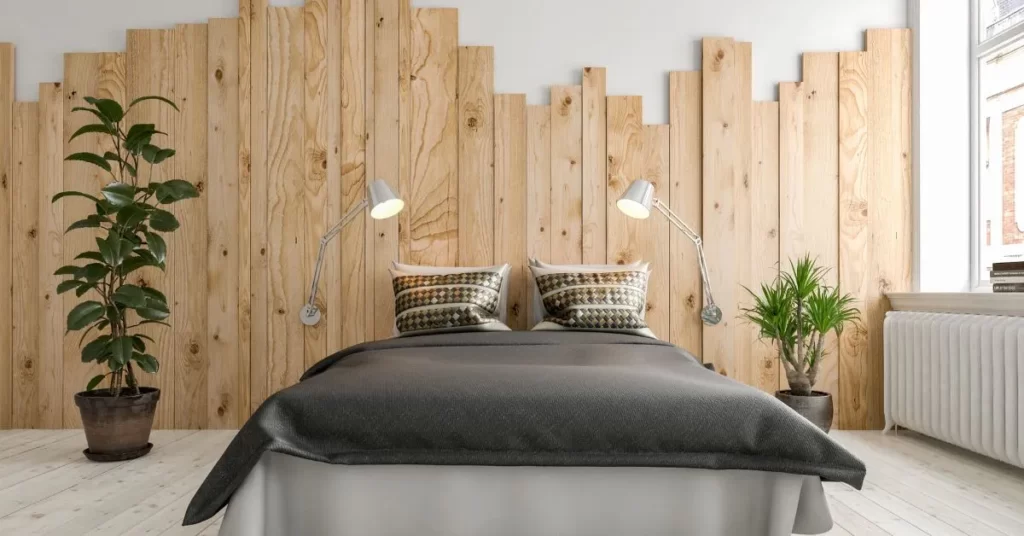Creating a serene and restful retreat in the bedroom requires careful consideration of various design elements, including standard human dimensions. By understanding and implementing these dimensions, you can optimize comfort, functionality, and overall well-being within the space. In this blog post, we will delve into the world of bedroom design, unveiling the significance of standard human dimensions and how they contribute to a tranquil sanctuary.

Achieving Serenity and Restful Sleep: The Significance of Standard Human Dimensions in Bedroom Design
Bed Dimensions: Finding the Perfect Fit for a Restful Sleep
The bed is the centerpiece of any bedroom, and its dimensions play a vital role in ensuring comfort. Standard bed sizes, such as twin (38″ x 75″ or 0.97m x 1.91m), queen (60″ x 80″ or 1.52m x 2.03m), and king (76″ x 80″ or 1.93m x 2.03m), have specific measurements that dictate the space required for a peaceful sleep. We’ll explore these dimensions and discuss factors to consider when selecting the right bed size for your bedroom, such as room size, personal preferences, and the number of occupants.
Clearance Space: Allowing Room to Breathe and Move
In addition to the bed itself, it’s essential to consider clearance space around the bed. We’ll discuss the recommended dimensions for walkways and clearances to allow easy movement and access to other bedroom elements like dressers, nightstands, and wardrobes. For example, a minimum clearance of 24 inches (0.61m) or 0.61 meters around the sides and foot of the bed is generally recommended to ensure ease of movement and accessibility.
Furniture Placement: Designing for Ergonomic Comfort and Functionality
Proper furniture placement enhances the overall flow and functionality of the bedroom. We’ll delve into the standard dimensions for placing key furniture pieces, such as dressers, nightstands, and chairs, to ensure ergonomic comfort and ease of use. For example, the height of a nightstand should ideally match the height of the top of the mattress, typically ranging from 24 to 30 inches (0.61m to 0.76m) or 0.61 to 0.76 meters.
Closet and Storage Dimensions: Organizing with Efficiency and Style
Efficient storage solutions are crucial for maintaining an organized and clutter-free bedroom. We’ll explore the standard dimensions for closets, including closet depth, height, and width, along with recommendations for shelving and storage systems. For example, a closet depth of around 24 inches (0.61m) or 0.61 meters allows sufficient space for hanging clothes, while adjustable shelving systems provide versatility for storing various items.
Lighting Considerations: Setting the Mood and Enhancing Relaxation
Proper lighting sets the mood and ambiance in a bedroom. We’ll discuss the importance of incorporating lighting fixtures with appropriate dimensions, such as bedside lamps and overhead lighting. Understanding how to achieve the right balance of light and shadow can contribute to a soothing and relaxing atmosphere. For instance, bedside lamps should be of appropriate height to ensure convenient reach and comfortable illumination for reading.
Window Treatments: Balancing Privacy, Aesthetics, and Functionality
Window treatments not only add privacy but also enhance the aesthetic appeal of the bedroom. We’ll explore the standard dimensions for curtains, blinds, and shades, considering factors such as window size and height. Discover how to select window treatments that complement the overall design while providing functionality and light control. For instance, curtains should typically extend beyond the window frame to allow for full coverage when closed.
Conclusion:
Designing a bedroom that serves as a serene retreat requires careful attention to standard human dimensions. By exploring and implementing these dimensions in bed selection, furniture placement, storage solutions, lighting considerations, and window treatments, you can create a space that promotes rest, relaxation, and rejuvenation. Let the standard dimensions guide you in crafting a bedroom that becomes your personal sanctuary for tranquility and peaceful sleep. Remember, incorporating these dimensions is not only about aesthetics but also about optimizing comfort and functionality for a truly harmonious bedroom design. Sweet dreams await in your thoughtfully designed, dimensionally balanced haven.












